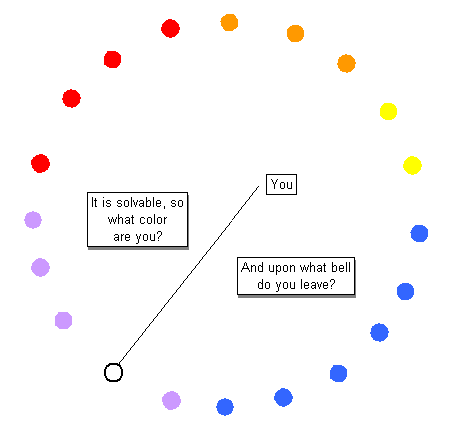That’s the point though, Absolutism.
Some people are too absolute to admit mistakes in definitions and meaning. Like how James refuses to admit that a Chiliagon, 1000-sided shape, is a circle. He is too proud to admit a weakness in his position, his meanings. But James and Arc are missing the points. There will be many different approaches to definition, interpretation. Accuracy is important but there are gray areas wherein which some will say “this is a circle” and others will disagree and say it is not. This gray area, area of conflict, is when each side offers superior definition and increases the stringent requirements, leading to the perfect, absolute circle.
“My definition is the absolute perfect circle and YOURS ISN’T!!!”
That’s not what I’m talking about. But it was necessary to show a few people here they were wrong to completely reject my, ARBITRARY definition. As if a brief definition of a circle has to do with the greater topic at hand? How about a square? A square has 4-sides and 4 right angles. Are people here going to argue with that definition as well? In order to do what? In order to dispute that if I define a cause as this or that, that those definitions must also be absolute and perfect?
That’s the point, isn’t it?
That for there to be “cause” of anything at all, in existence, then those causes must be defined absolutely and perfectly? Nope, that was never my implication or intention, James.
Causes, like these definitions of shapes, require lots of effort and sophistication to apprehend and understand.
Like how an offshore earthquake keeps causing a coastal tidal wave. It keeps happening, everytime, one after the other. So ought we not then deduce, and operate from the premise, that offshore earthquakes cause coastal tidal waves???
My opposition has few directions to travel, to dispute, to doubt this. And you could even say “well so what, it doesn’t matter”. It doesn’t matter to you, but knowing the causes of things, can save lives, and to those who are swept away by coastal tidal waves, will absolutely know the difference of importance, and whether it was the ‘good’ thing to do, to attribute causes to natural phenomenon.
It’s not imaginary, a matter of the mind only. Some humans, a few at least, attempt to find, locate, and identify causes in existence. The patterns of reality, of existence. And in so doing, they gain advantages that other people do not have. The scientist who creates a device to detect offshore earthquakes, can save countless lives, whereas those other places and people who do not, will not save lives. If you are fine with that then so be it. But cause, as a general matter, is much larger than merely offshore earthquakes and chiliagon circles.

